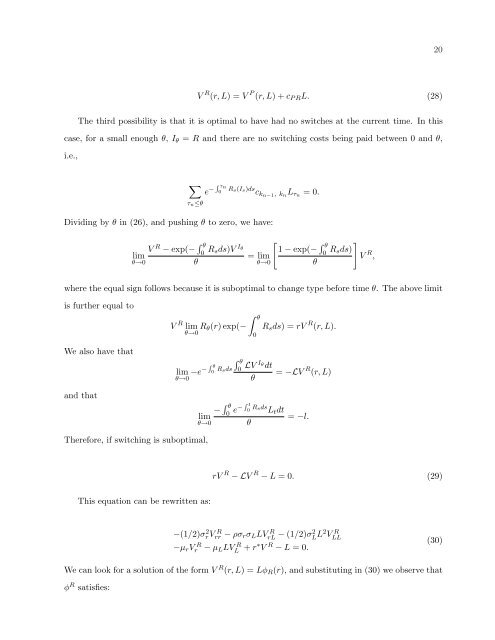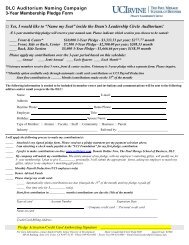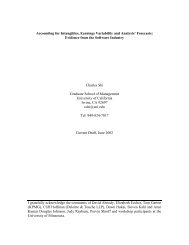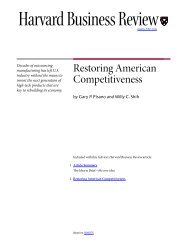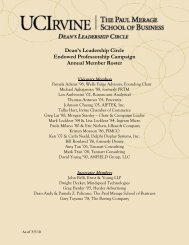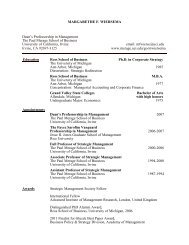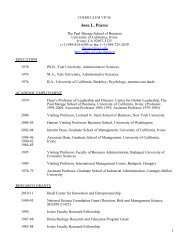View Carlson-Titman-Tiu Paper - The Paul Merage School of Business
View Carlson-Titman-Tiu Paper - The Paul Merage School of Business
View Carlson-Titman-Tiu Paper - The Paul Merage School of Business
You also want an ePaper? Increase the reach of your titles
YUMPU automatically turns print PDFs into web optimized ePapers that Google loves.
V R (r, L) = V P (r, L) + cP RL. (28)<br />
<strong>The</strong> third possibility is that it is optimal to have had no switches at the current time. In this<br />
case, for a small enough θ, Iθ = R and there are no switching costs being paid between 0 and θ,<br />
i.e.,<br />
<br />
τn≤θ<br />
e − τn<br />
0 Rs(Is)ds ckn−1, kn Lτn = 0.<br />
Dividing by θ in (26), and pushing θ to zero, we have:<br />
V<br />
lim<br />
θ→0<br />
R − exp(− θ Iθ<br />
0 Rsds)V<br />
θ<br />
θ<br />
1 − exp(− 0 = lim<br />
θ→0<br />
Rsds)<br />
<br />
V<br />
θ<br />
R ,<br />
where the equal sign follows because it is suboptimal to change type before time θ. <strong>The</strong> above limit<br />
is further equal to<br />
We also have that<br />
and that<br />
<strong>The</strong>refore, if switching is suboptimal,<br />
This equation can be rewritten as:<br />
V R θ<br />
lim Rθ(r) exp(−<br />
θ→0 0<br />
Rsds) = rV R (r, L).<br />
lim<br />
θ→0 −e− θ<br />
0 Rsds<br />
θ<br />
0 LV Iθdt<br />
= −LV<br />
θ<br />
R (r, L)<br />
−<br />
lim<br />
θ→0<br />
θ<br />
0 e− t<br />
0 RsdsLtdt = −l.<br />
θ<br />
rV R − LV R − L = 0. (29)<br />
−(1/2)σ 2 rV R<br />
rr − ρσrσLLV R<br />
rL − (1/2)σ2 L L2 V R LL<br />
−µrV R<br />
r − µLLV R L + r∗ V R − L = 0.<br />
We can look for a solution <strong>of</strong> the form V R (r, L) = LφR(r), and substituting in (30) we observe that<br />
φ R satisfies:<br />
20<br />
(30)


